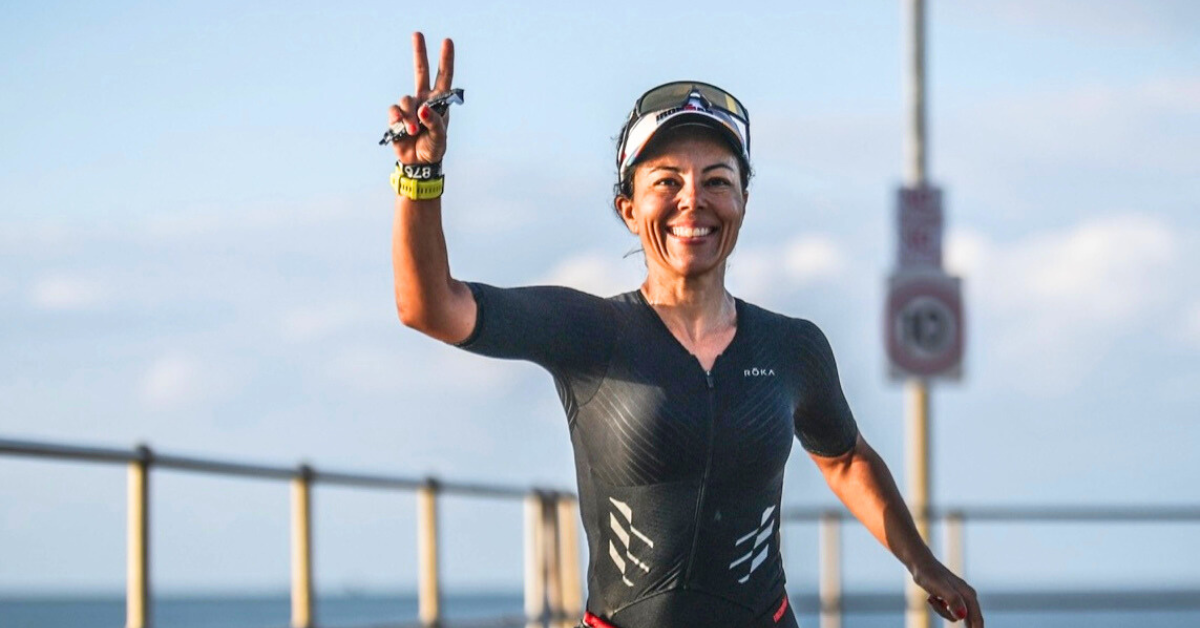
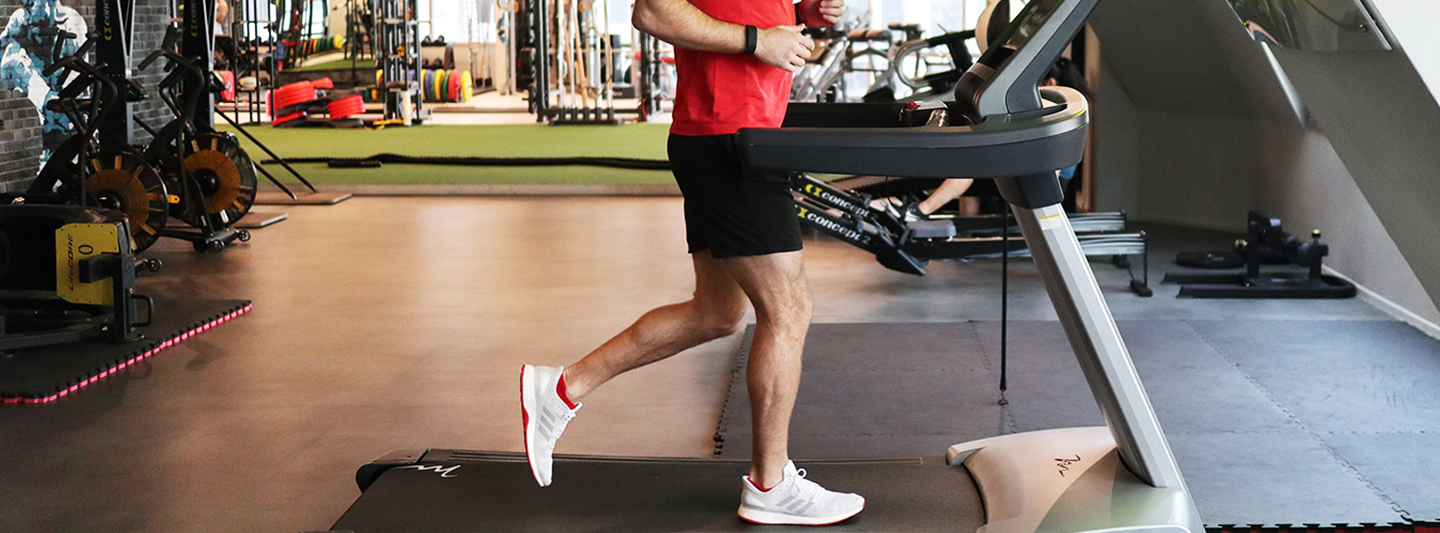
What to Expect in a Run Analysis and How One Can Help You Run Better, Faster and Injury-Free
If you’re a run enthusiast, you may have heard of the term run analysis before. Perhaps you know a little (or a lot) about what it is, or maybe it’s a completely new and foreign term to you. One or the other, read on to find out everything you need to know about this assessment from run coach and founder of Second Wind Nation, Jing Zhi!
How will a run analysis benefit me?
Fixes injuries and prevents them from recurring
Runners often experience injuries as a result of running with poor mobility, flexibility or strength to name just a few of the causes. A run analysis is able to figure out what the cause of the injury is and what can be done to fix the issue as a preventative measure of getting injured again.
Often runners who get injured will take a break from running and pick it up again when they feel the injury has subsided, only to get injured again soon after. Similarly, in an attempt to ward off injuries, some runners will purely turn to treatments such as massage and stretches. The downside with these approaches to treatment is that while they keep the injury at bay, they don’t address the root issue, leaving room for recurring injuries.
Run Faster
In running, there are a few main factors - one of them being running economy. The longer the distance you are running, the greater the significance of running economy.
A run analysis session will look into your running economy and find ways that you can modify your training sessions to improve your running performance.
Running Shoe Advice
The way in which you engage muscles will affect how you run, and different shoes encourage different running patterns. A run analysis will help you understand which shoes fit you best.
How often should I revisit a run analysis?
The answer to this is dependent on what is done after the first analysis. Most runners will see improvements after a single session, however, if runners don’t practice the advised corrective exercises regularly and properly, there might not be improvements thereafter.
Some cases (such as those of structural issues rather than functional issues) need more corrective work and additional advice. In circumstances such as these, improvements may only present themselves after several sessions. Therefore, whether you have a run coach or a personal trainer who follows up with you on corrective exercises plays a part as well.
What to expect during a run analysis
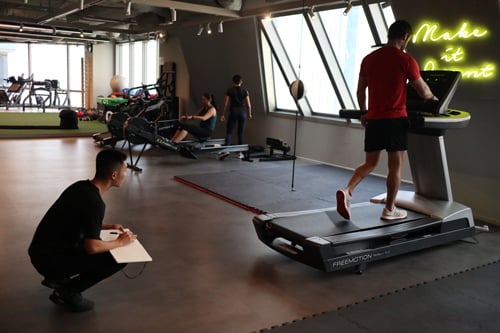
The analysis begins with a run to determine any major areas for improvement. For example, having worn-out shoes that might contribute to injury.
Another immediate observation that can be made is your cadence, which refers to the number of steps that you take per minute. During a run analysis, your cadence is checked. A slower cadence results in a heavier landing causing the legs to take a greater impact which could lead to injury.
The examination portion of the analysis also looks at how your foot lands in relation to your body. Landing too far forwards creates more impact on the legs (as opposed to narrow steps), which can result in injury. Similarly, symmetry is checked as an asymmetrical run can cause imbalance and also injury.
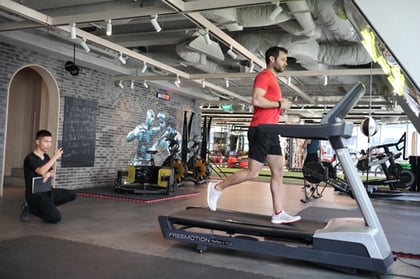
A video of the runner in action is taken from the back and side. The video is for the runner to see his own running pattern first-hand and also for the future before/after comparison.
Slowing down and watching the video at ½ to ⅛ speed also helps to get a better insight at what's going on at different parts of the runners' body.
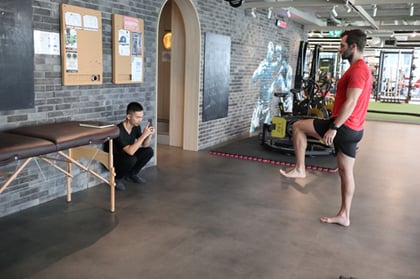
A look into the client's balance on each leg is done in order to find a starting point to hypothesise about muscle compensation patterns (whether a muscle is overcompensating for another) that the runner might have while running.
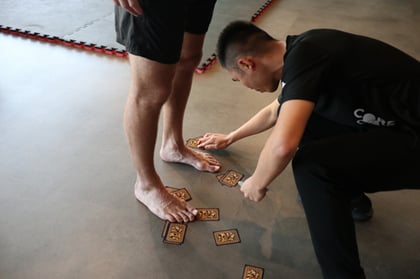
In this particular analysis, cards are placed underneath the client's feet, making sure that all parts of the feet are either in contact with the ground or the cards. This is done to check if there's a difference in how much range of movement the client has with his feet in contact with the ground versus not in contact with the ground.
If there's a difference, it just means that by changing the contact point with the ground his running stride will change. This is a data point to help determine if help is needed on the client's feet or not.
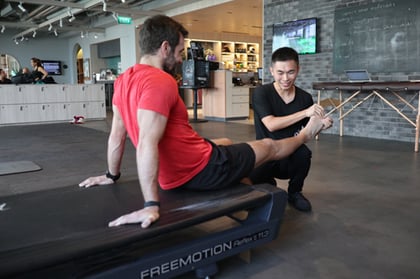
In this case, the previous test found that the client will benefit from having more ground contact. One way this can be achieved is by improving toe mobility, making them more sensitive and reactive as he moves.
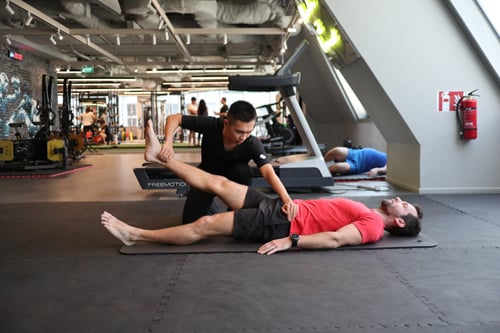
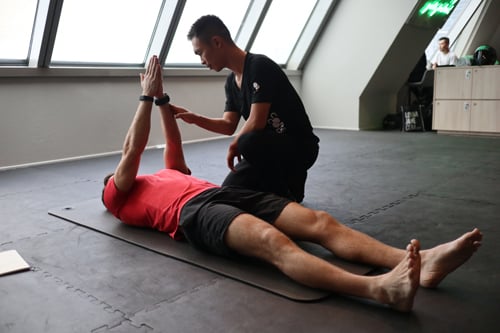
More tests are done to identify compensation patterns that may be affecting the runners' stride. Simply put, there are overactive areas doing work that another area should be primarily responsible for and these lead to inefficiency and potential injuries.
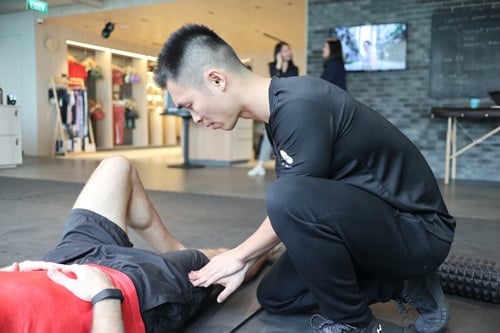
Depending on the issues identified during the assessment, the client is treated accordingly.
To treat one of this client's compensation patterns, he is having his muscles loosened in that region with a massage.
Releasing the overactive muscle is the first part of the treatment. The second is activating the underactive muscle to teach the brain to use it when replicating the movement in the future.
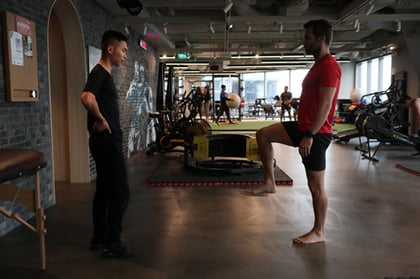
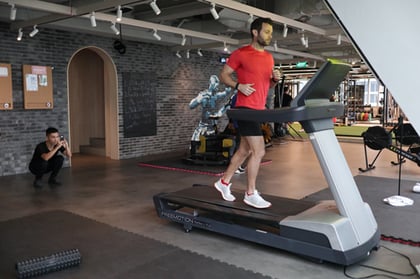
At the end of the session, a single leg test and video recording of the client's run are done again to check:
-
If there are any visible differences after doing corrective work (some effects might be clearly visible, but others may need more work)
-
Whether any pain has been alleviated (if there were any before the session)
-
Spot if there are any more major areas to work on after the analysis
-
Spot for new areas that need work that arose from initial changes of the client's stride
After going through a run analysis, runners can expect to have gained a more stable body that will help them run faster, have a better understanding of what kind of running shoes will optimise their running experience, and will be able to enjoy injury-free runs.
When doing a run analysis with Chua Jing Zhi from Allset at Core Collective, you will receive the before and after videos of your running as well as a run analysis report. You will also get a free 30 minutes follow-up consultation anytime between two weeks to three months after your session!
To book a run analysis session with Chua Jing Zhi, please call +65 6250 1222.
--
Contributor:

Chua Jing Zhi is a swim, bike, and run coach who has worked with clients ranging from Southeast Asia's top marathoners and triathletes to absolute beginners and injured folks. His services are sought after by international brands like Pocari Sweat, New Balance, and Polar.
He believes in compassionate coaching, having faced his own challenges as a plant-based varsity athlete, Ironman and ultramarathon finisher, and commando officer regular.
The co-founder of Allset and founder of Second Wind Nation, a regional media, coaching, and events company, his skill sets include biomechanical assessment, strength and conditioning, and training program design.
Related Article
